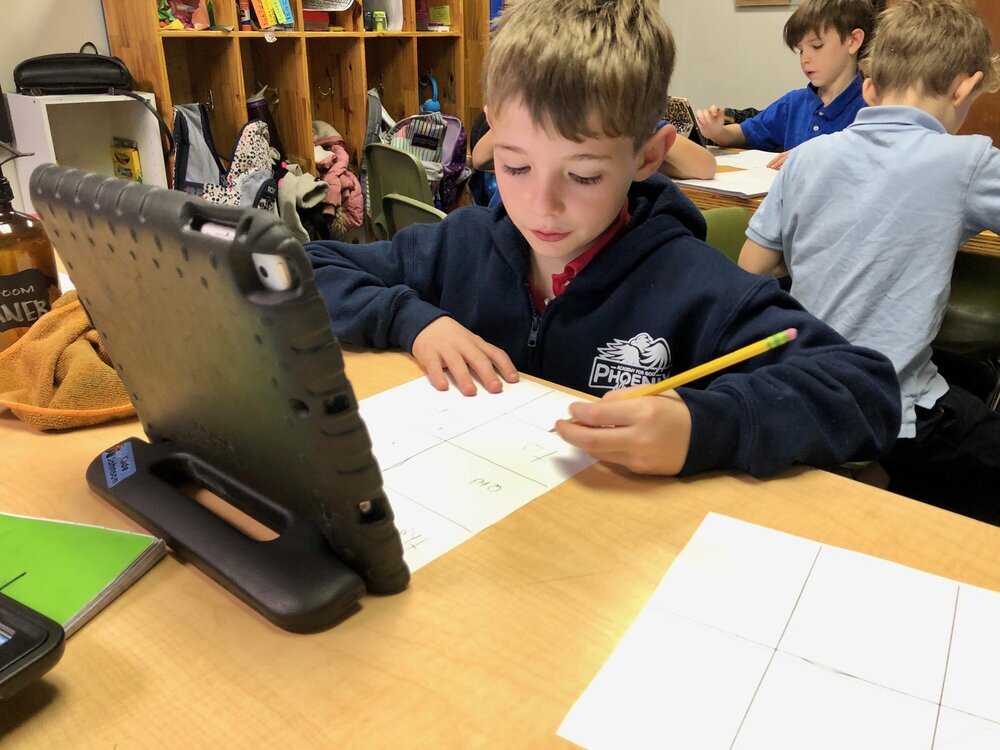Teaching Students, Not Classes
Written by Mr. Derek Bargatze, Generals Level Lead Teacher
Why make education monotonous and repetitious when the students receiving it are so diverse? There’s a saying our Headmaster, Gregg Garner, taught us: “teach students, not classes.” When we teach classes, the content runs the high risk of becoming repetitive and monotonous for the students and for the teachers. And I get it, the teacher needs to get through all the material...whether the students were ready for it or not.
However, a teacher who teaches students can accomplish the same goal, but recognizes that students are different. I have students that can read a word off the white board and never forget it. They have a better memory than I do. I have other students who can’t read those same words, but can draw a beautiful and realistic portrait of themselves. I have students that get overwhelmed emotionally from a conflict at lunch and just can’t bring themselves to focus in the next class. At the same time, I have a student who is completely unaware they caused that student to be so upset. Every student is different, and to teach them like they’re the same is doing my students a disservice.
A teacher’s job is to be able to speak the “learning language” of every student. I think of a few Bible verses every time I think of “teach students, not classes”: Ephesians 2:10 - “For we are his workmanship, created in Christ Jesus for good works, which God prepared beforehand, that we should walk in them.” Also, Isaiah 64:8, “Yet you, LORD, are our Father. We are the clay, you are the potter we are all the work of your hand.” God cares about our development as human beings, first and foremost. Before we concern ourselves with completing our curriculum (which is important), we must give attention to the beautiful students God has given us the privilege to teach. Part of caring for them is teaching in a way they can understand.
Elementary reading courses are fluid so that students are able to learn at an individual pace. Games and hands-on activities in the classroom make learning fun and inviting for our younger students.
The Theory of Multiple Intelligences by Howard Gardener, suggests “that each human being is capable of seven relatively independent forms of information processing, with individuals differing from one another in the specific profile of intelligences that they exhibit.” Vygotsky’s Theory on the Zone of Proximal Development teaches that students learn at a different pace and teaching done well makes room for students to learn at their pace alongside an educator, tutor or a more competent peer. Both of these philosophies are incorporated into the Academy’s paradigm for education.
What I love about the Academy for G.O.D. is that we make these modifications to our daily class schedules for all our students. Our Language Arts block looks like students excited to be in a class they can thrive in, and when they’ve mastered their benchmarks, they can move to a different and more challenging Language Arts class. The same goes for our STEM and Creative Arts courses as well. Students don’t leave their age mates for the entire day, but just for the class period and return right back to their homeroom for breaks (which our students have FIVE breaks in their day). We have observed that our students love learning because they are taught by teachers that teach in ways they learn. If a student needs to touch and move letters, then that’s what they get. If a student wants to write down word for word, then they can do it. If a student wants to write a sight word and then perform the action because it helps them learn it, then that’s what the student is doing. It’s simply a great place to learn!
Sources:
1. Gardner, H., & Hatch, T. (1989). Educational Implications of the Theory of Multiple Intelligences. Educational Researcher, 18(8), 4–10. https://doi.org/10.3102/0013189X0180080042. Ryan, K., Cooper M., J., & Tauer, S. (2013). Teaching for Student Learning: Becoming a Master Teacher. Belmont, CA: Linda Schreiber-Ganster.

